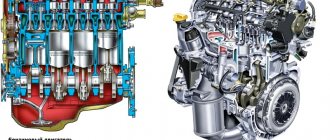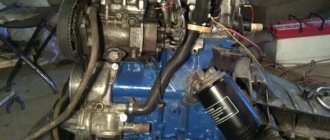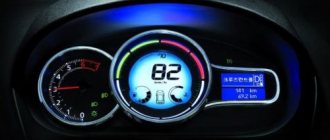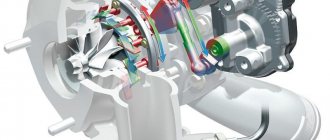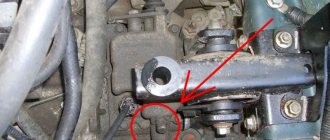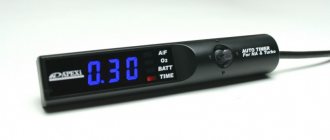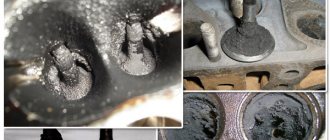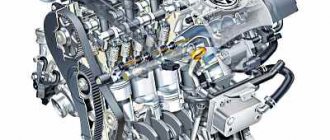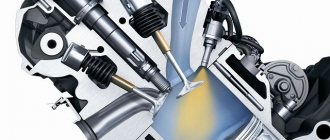History of the diesel engine
Gasoline-type internal combustion engines are constantly being modified. Designers are striving to improve performance characteristics. Even with the new direct injection, a gasoline internal combustion engine produces 30%! Efficiency, and a diesel internal combustion engine without turbocharging produces 40%! Efficiency, with turbocharging - about 50%!
Therefore, diesel engines are becoming more and more popular in Europe and, in general, around the world. Gasoline is becoming more expensive than diesel fuel. More and more people, before buying a car, evaluate the fuel consumption of this car. The main significant disadvantage of diesel engines is their large dimensions and heavy weight. Therefore, they were installed only on trucks.
Manufacturing and servicing a diesel engine is more difficult because the design must be such that all parts are made with high precision.
History of creation
A diesel engine, also known as diesel, is a piston internal combustion engine, the operating principle of which is based on the self-ignition of fuel sprayed by compressed and hot air. Until the end of the 20th century, this type of internal combustion engine was installed on ships, diesel locomotives, buses, trucks, and tractors. Since the end of the 20th century, after successful tests, it began to be installed en masse on passenger cars.
The name of this engine corresponds to the name of the inventor Diesel. Rudolf Diesel created the internal combustion engine in 1897. He managed to create a device where fuel ignites by compression rather than by a spark.
According to information from Wikipedia, in 1824, Sadi Carnot came up with and formulated the idea of the Carnot cycle, the essence of which was the ability to bring fuel to the auto-ignition temperature by sharp compression.
66 years later, Rudolf Diesel proposed putting this idea into practice in 1890. On February 23, 1892, he received a patent (permission) for his engine, and the next year he published a brochure on his unit. He patented several variants.
A successful test of the diesel engine was only possible on January 28, 1987 (before this, attempts were unsuccessful). After this, R. Diesel began selling licenses for his invention.
Although the efficiency and ease of use of the new engine were at a high level compared to steam units, the new diesel devices were large in size and heavy (they were larger and heavier than steam engines of that time).
The original idea was that the fuel would be coal dust. But after testing this type of fuel, it turned out that coal dust very quickly wears out engine parts due to its abrasive properties and because of the ash that resulted from the combustion of this dust.
Further, vegetable oil and light petroleum products were used as fuel. It was on these types of fuel that the tests of the Diesel internal combustion engine were successful.
Engineer Akroy Steward built a working semi-diesel engine in 1896. In this version of the internal combustion engine design, it was decided that air would be drawn into the cylinder, after which it would be compressed by the piston and pumped at the end of the compression stroke into a container into which fuel was sprayed. To start such a motor, the container was heated by a lamp from the outside and after starting the engine worked itself. Ecroy Steward experimented with the compression of fuel and air in the cylinder. He wanted to eliminate the spark plugs.
The main difference between gasoline engines and diesel engines is the power system.
The Russians did not lag behind in inventions. Regardless of the success of Diesel’s creation of internal combustion engines, in 1989 in St. Petersburg at the Putilov plant, engineer Gustav Trinkler invented and created the world’s first non-compressor high-pressure oil engine, that is, it was an engine with a prechamber (the prechamber is a preliminary combustion chamber, which in volume is 30%! of the total volume of the combustion chamber). This engine was called the “Trinkler-motor”.
Recommended: Why does the engine not hold speed at idle?
After comparing the German version of the Diesel engine and the Russian Trinkler engine, the Russian version turned out to be more effective. The Trinkler motor used a hydraulic system for pumping and atomizing fuel - this made it possible to avoid installing an additional air compressor and made it possible to increase the engine shaft speed. In the Russian version, an air compressor was not installed in the engine design. Heat was supplied slowly and took longer, compared to the German engine of Rudolf Diesel. The trinkler motor was simpler and more efficient. But those who had licenses for Rudolph and Nobel diesel engines put a spoke in the wheels to stop the spread of a competitive version of the engine. In 1902, work on the creation of the Trinkler motor was stopped.
In 1989, Emmanuel Nobel received a license for Rudolf Diesel's engine. The engine was modified and now it could run on oil rather than kerosene. In 1899, Mechanical, located in St. Petersburg, began mass production of such motors. In 1900, at the Paris World Exhibition, the diesel internal combustion engine received the GRAND PRIX. Before the World Exhibition in Paris, news appeared that the Nobel plant in St. Petersburg produces internal combustion engines that run on crude oil. In Europe, such an internal combustion engine began to be called “Russian diesel”. A Russian engineer named Arshaulov was the first to design and introduce a high-pressure fuel pump (HPF) into the system. The drive for the injection pump was air compressed by the piston. The injection pump worked with a non-compressed injector.
In the 20s of the twentieth century, Robert Bosch modified the built-in injection pump. This device is still used today. Bosch has also improved the compressorless injector.
Since the 50-60s of the 20th century, diesel engines have been successfully installed on trucks and vans.
Since the 70s, due to rising prices for gasoline fuel, passenger car manufacturers began to pay attention to diesel engines.
Currently, almost every car brand has a modification with a diesel engine under its hood.
Refueling and service
Every diesel car owner must carefully select a gas station. The matter concerns not only the popularity of the brand, but also the quality of diesel fuel. These two parameters do not always coincide. You can check the fuel yourself, taking into account the advice of professionals. Simple tests are used for this. Freezing or clouding of diesel fuel is unacceptable - it must remain clean regardless of the conditions. Recommendations for the service include:
If a car owner uses the wrong oil, the engine may fail after driving 10-20 thousand km. Particular attention should be paid to the purchase of filters - they must be of unsurpassed quality and be original. Regular car diagnostics will allow you to detect fuel injection pump problems in time and avoid costly repairs.
The same applies to the block head. If breakdowns or problems are detected, diesel engine repairs should be carried out immediately to prevent wear of other critical parts. For servicing and repairs, please contact a reputable service center with personnel who are well versed in diesel systems. The most common parts that fail are:
Therefore, they need to be monitored and checked first. Failure of any of the listed parts can cause complete failure of the power diesel engine.
Fuel system design
The history of the creation of the diesel engine began in the 19th century. It was then that engineer Rudolf Diesel created a compression ignition unit. The first diesel engine ran on regular kerosene.
Scientists have used different types of fuel to get better results. The engine ran on palm and rapeseed oil, crude oil, and later they began to use fuel oil and diesel fuel.
WATCH THE VIDEO
However, the injection system was imperfect, which did not allow the use of a diesel internal combustion engine in cars that operated at high speeds. The power of the first diesel engine was not very high, but gradually the problem was solved.
The first diesel cars appeared only in the 20s. XX century These were trucks and public transport. Another 15 years later the first passenger cars appeared, but they were not widespread. The history of the diesel engine began to change only in the 70s. It was at this time that the compact internal combustion engine appeared.
Operational Requirements
Among the disadvantages of diesel engines, it is necessary to highlight the increased demands on fuel carriers. Most often, owners of such cars complain about the difficulties of the fuel system. Problems become especially acute with the onset of frost.
They are caused by the presence of paraffin in diesel fuel. This inert substance has a thick consistency even in the warm season. And under the influence of sub-zero temperatures, so-called paraffin threads are formed, which get stuck in the filters. They also interfere with the operation of the fuel injectors. This is the reason why the diesel engine starting system fails on frosty days. They are difficult to start and take a lot of time.
To avoid damage to diesel internal combustion engines, you must adhere to the recommendations prescribed by the vehicle manufacturer. In addition to the quality of diesel fuel, you need to monitor the engine oil. It needs to be changed as often as possible. And you should choose a brand in accordance with the manufacturer’s recommendations.
Turbines, which are equipped with diesel models today, are particularly sensitive to lubrication. Professionals believe that to extend the service life of a vehicle, it is better to choose Japanese fuel injection pumps. Also, you cannot turn off the internal combustion engine for several minutes until the turbine has completely cooled down.
Owners of diesel models must monitor fuel equipment regularly; it needs timely care. Even minor damage to one of the fuel system elements can require expensive repairs. You need to regularly change fuel filters and monitor their condition. Separately, you will have to monitor the sump and drain the liquid regularly. All this will help avoid system failure and unnecessary costs for repair work.
Diesel engines do not like aggressive driving. Gears should be engaged smoothly, without sudden jumps. A careful attitude will extend the service life of the engine and keep expensive parts of the fuel system in working condition.
The principle of operation of a diesel engine
The main feature of a diesel internal combustion engine is that the ignition of the fuel-air mixture in the combustion chambers occurs due to compression and heating. Diesel fuel is sprayed through nozzles.
Diesel fuel is supplied only at the moment at which the air is maximally compressed and has a maximum temperature.
When the air is hot, diesel fuel is highly flammable. Before fuel enters the combustion chambers of the internal combustion engine cylinders, it passes through cleaning filters that remove mechanical impurities that would quickly cause damage to the entire device.
Operating order of the diesel system:
- Air is supplied through the intake valve as the piston moves downward.
- Next, the piston rises up and compresses the air 20 times. The pressure at this moment is 40 kilograms per 1 centimeter. The air temperature at this moment reaches 500 degrees Celsius.
- When the air is compressed and heated, the injectors of this cylinder inject and atomize fuel. Due to the very hot air, diesel fuel ignites. This method of operation eliminates the presence of spark plugs in the system. Also, diesel units do not have an ignition system.
The process of self-ignition of diesel fuel with air from a glow plug.Also, the device does not have a throttle valve, which ensures high torque. But, the speed at this time is at a low level. During one cycle of diesel operation, the injectors can supply fuel several times.
- When the flammable mixture is ignited, the blast wave pushes the piston down. A piston that is connected to the crankshaft via a connecting rod and rotates the crankshaft.
- Next, from bottom dead center (BDC), the piston moves upward and pushes exhaust gases through the exhaust valves.
This process in engine operation is called a cycle.
Features of diesel engines
A distinctive feature of diesel engines is the absence of spark plugs. Combustion occurs by suction/compression of air after diesel fuel is injected into the chamber. This is the reason for the excellent performance of these units at low speeds.
However, such a fuel system is considered the most expensive and complex. At the same time, it requires the close attention of the car owner. A particularly important element is the fuel injector. It is she who is responsible for the high-precision distribution of fuel. The injector is exposed to high temperatures and intra-cylinder pressure. Consequently, she needs help to perform her functions better. For this purpose the following are additionally used:
In the latter, the incoming air masses are twisted. This improves and speeds up the ignition process. The vast majority of modern diesel engines are equipped with glow plugs. At low temperatures, diesel fuel becomes very cold. And candles running on electricity provide heating of the fuel mass. This makes the engine start faster and easier.
Malfunctions and diagnostics of injection pump
The fuel pump can be called the “heart” of the unit. Thanks to it, fuel flows into the chambers. The main malfunctions are associated with poor fuel quality, as well as the use of old oil.
Dark smoke from the exhaust pipe
This indicates that there is poor mixture formation in the cylinders, which is associated with late injection. Additionally, injectors and valve clearances should be inspected.

